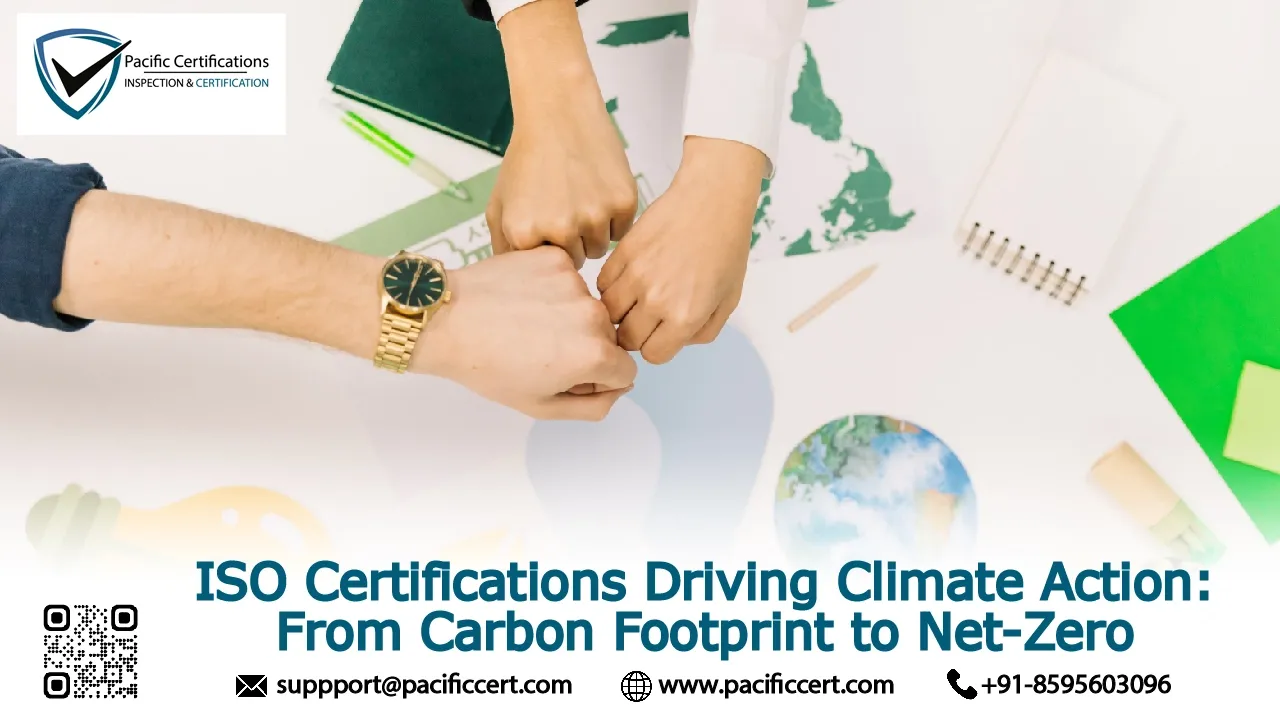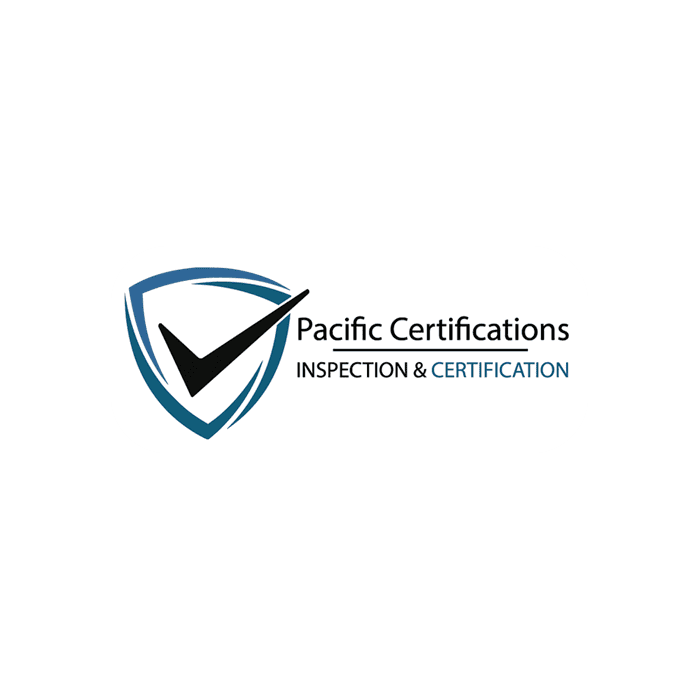ISO Certifications Driving Climate Action: From Carbon Footprint to Net-Zero

In the current business landscape, sustainability and climate action are no longer optional - they are necessary to remain compliant and compete in the marketplace. The ISO certification process provides organizations with a structured framework of standards for managing and improving the corporation’s environmental footprint.
This blog explores how ISO certifications, such as ISO 14064, ISO 14067 and ISO 50001, are driving climate action. We will also look at key subtopics, including mapping ISO requirements to the GHG Protocol, calculating carbon footprints for exporters, leveraging energy savings through ISO 50001 and ensuring compliance with water footprint standards.
For assistance, contact us at [email protected].
Introduction
Chicago, a key business centre in the United States, has a broad range of organizations in industries such as finance, manufacturing, healthcare and transportation. As these organizations work to fulfil customer expectations, protect data and comply with regulations, they cannot afford to have interruption in their operations. There are a variety of disruptions that can affect business operations such as power outages, issues with the supply chain, or unforeseen events that negatively affect their business.
ISO 22301 provides an overreaching framework for developing business continuity plans that help organizations manage risks and ensure their ability to recover quickly after a disruption. By achieving ISO 22301 certification, businesses in Chicago can demonstrate their commitment to resilience, reduce the risk of operational downtime and upgrade their reputation in the market.
ISO 14064 vs GHG protocol: Mapping Requirements
Here is a comparison between ISO 14064 and the GHG Protocol highlighting their main differences in requirements:
Aspect | ISO 14064 | GHG Protocol | |
Scope | Global, applicable at both organizational and project levels | Corporate level (GHG Protocol Corporate Standard), Product level (GHG Protocol Product Standard) | |
Focus | Focuses on the measurement, reporting and verification of GHG emissions | Focuses on corporate-level emissions and product-level emissions | |
Guidance | Provides a structured framework for GHG inventories, monitoring and reporting | Provides guidelines for calculating and reporting emissions from corporate and product perspectives | |
Level of Detail | Highly detailed, structured approach for organizations, with specific methodologies and technical requirements | Flexible in terms of industry or geography; more guidance on corporate-level emissions | |
Reporting | ISO 14064-1 focuses on organizational emissions, ISO 14064-2 on GHG projects | GHG Protocol Corporate Standard covers organizational emissions; the Product Standard covers lifecycle emissions of products | |
Verification | ISO 14064 requires third-party verification for certification | GHG Protocol does not require verification, though it is often recommended for accuracy |
ISO 14067:Calculating product carbon footprint for exporters
ISO 14067 provides a standard way to calculate the carbon footprint of products (CFP). Producers need to provide evidence of their sustainability practices, as well as comply with international obligations. Here are some of the key points about ISO 14067:
• Understanding the life cycle of a product: ISO 14067 provides a mechanism to assess the whole life cycle of a product, moving from the extraction of raw materials, through manufacturing, shipping, use and disposing or recycling.
• Recognizing carbon emissions: This standard provides an ability for the business to illustrate carbon emissions at each step of the life cycle, which helps provide a clearer understanding of their carbon footprint in the ecology.
• Consumer & market pressures: Eco-conscious consumers are demanding more transparency concerning the carbon footprint of products. ISO 14067 provides a framework for businesses to provide this information.
• Provides competitive advantage: ISO 14067 can allow businesses to differentiate themselves in world markets. By exporting sustainable products using ISO 14067 certified materials and processes, it will allow exporters to earn the loyalty of conscientious consumers.
• Better decision making: With a better understanding of the improvements that could be made by understanding products' whole life cycle carbon footprint; businesses can improve their material selection, manufacturing processes, shipping practices as well as consumable (or recyclable) materials.
ISO 50001& energy savings: Leveraging U.S. IRA incentives
ISO 50001 is an important certification for organizations that want more smooth energy use and reduced energy costs. The standard establishes a framework for energy management systems (EMS) and will guide organizations in understanding, monitoring and controlling the energy they use. ISO 50001 certification allows organizations to establish energy performance criterion.
The U.S. Inflation Reduction Act (IRA) contains incentives for energy efficiency improvements and organizations certified in ISO 50001 can benefit from tax credits, grants, incentives and more. ISO 50001 certification aligns with federal and state energy savings goals, qualifying them under the IRA for energy savings measures that help organizations reach their sustainability goals.
ISO 26000vs ISO 20400: CSR and sustainable procurement
ISO 26000 and ISO 20400 are both important elements of corporate social responsibility (CSR) and sustainable procurement. ISO 26000 provides guidance on how to implement social responsibility in business operations because the ISO 26000 standard deals with human rights, labour practices, the environment, fair operating practices and the concerns of consumers.
ISO 20400 focuses on sustainable procurement which provides guidance for organisations enabling them to incorporate sustainability in their procurement operations and assist them in obtaining suppliers and materials in accordance with environmental and social criteria.
For assistance, contact us at [email protected].
ISO 14046water footprint: Compliance for drought‑prone regions
ISO 14046 is the international standard for knowing or to measure and manage water footprints. It provides guidelines for organizations to understand the effects of their water consumption through their entire product life cycle and to find opportunities for reducing water consumption and managing water resources better. This is particularly important for businesses based in regions where drought will be a challenge. Water scarcity is an increasingly important issue and the ability to make good decisions around and demonstrate, good water resource management is more necessary than ever. Water footprint assessment under ISO 14046 provides a consistent method to understand and manage water use. The standard will provide businesses with a framework for measuring the water use they may have across their operations, supply chains and production.
Science‑based targets vs ISO 14064: Alignment strategies
Science-based targets (SBTs) offer organizations straightforward avenues to reduce greenhouse gas emissions reflecting the latest climate science with the aim of limiting global temperature rise to well below 2°C with the end goal of net-zero emissions by 2050.
ISO 14064 provides measurement and reporting of GHG emissions, but also provides an important piece of the playbook to help organizations track alignment of their emission reduction with science-based targets. It provides the tools needed for measuring and reporting emissions at the organizational level, which is a key component for the organization's committing to SBTs.
Contact Us
For more details on how ISO certifications can help you drive climate action, or if you’re looking to get certified, contact Pacific Certifications. Our team of experts is here to help you navigate the certification process, improve your sustainability efforts and meet global climate action standards.
For assistance, contact us at [email protected].
Visit our website at www.pacificcert.com.
FAQs
Q1: What is ISO 14064?
ISO 14064 is an international standard for greenhouse gas (GHG) emissions measurement, reporting and verification. It provides guidelines for organizations to quantify and manage their emissions in line with global climate action goals.
Q2: How does ISO 14067 help exporters?
ISO 14067 helps exporters calculate the carbon footprint of their products, ensuring that they comply with international regulations and appeal to eco-conscious consumers. This certification demonstrates a commitment to reducing emissions throughout the product lifecycle.
Q3: What are the benefits of ISO 50001 for organizations?
ISO 50001 provides organizations with a systematic approach to improving energy performance, reducing energy costs and achieving energy efficiency goals. The standard also aligns with federal and state incentives, such as those offered by the U.S. IRA, for energy-saving improvements.
Q4: How can ISO 26000 and ISO 20400 improve CSR and procurement practices?
ISO 26000 provides guidance on corporate social responsibility, while ISO 20400 focuses on sustainable procurement. Together, they help organizations integrate sustainability into their operations, ensuring that their business practices are socially responsible and environmentally friendly.
Ready to get ISO certified?
Contact Pacific Certifications to begin your certification journey today!
Suggested Certifications –
Read more: Pacific Blogs

